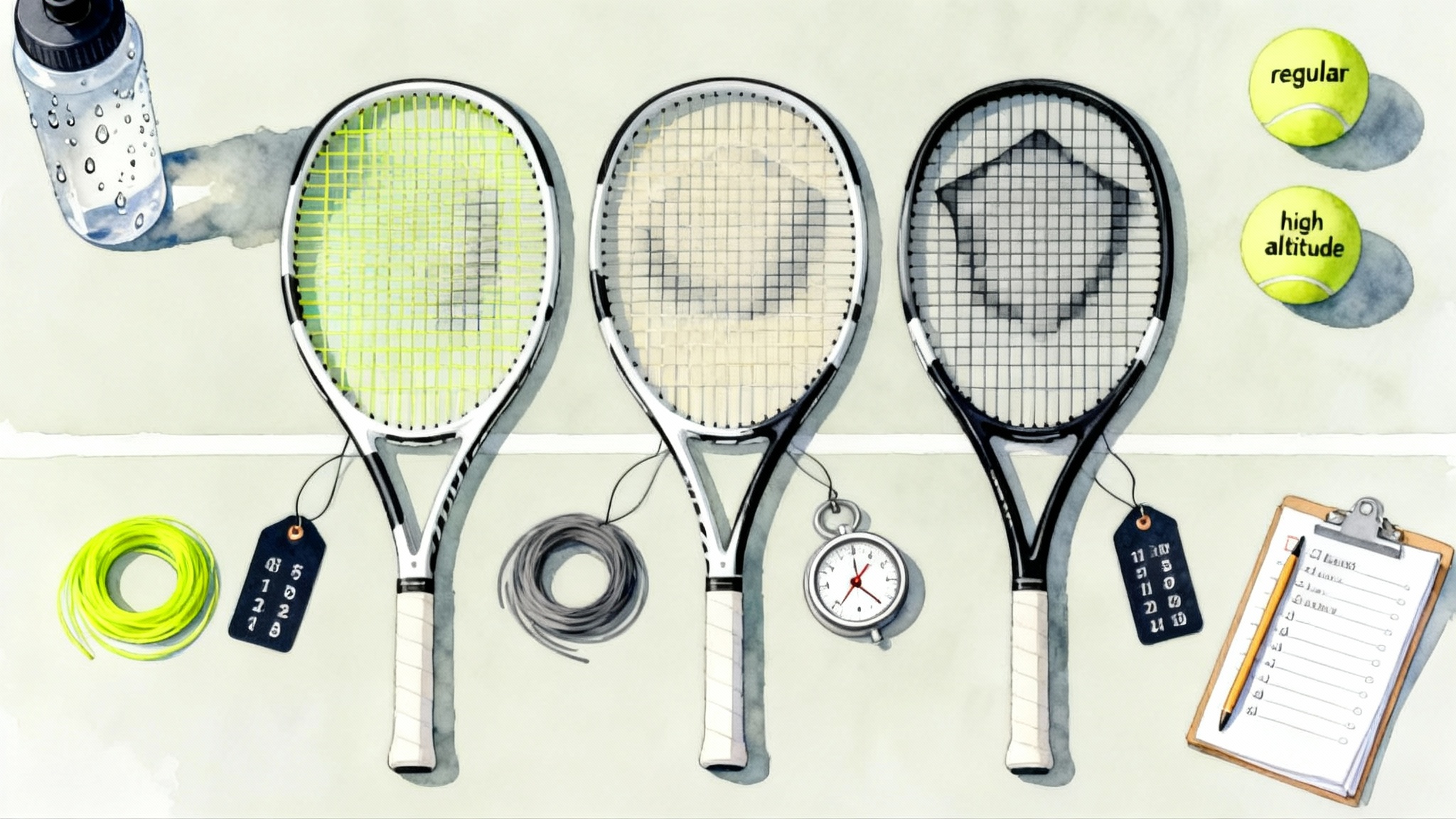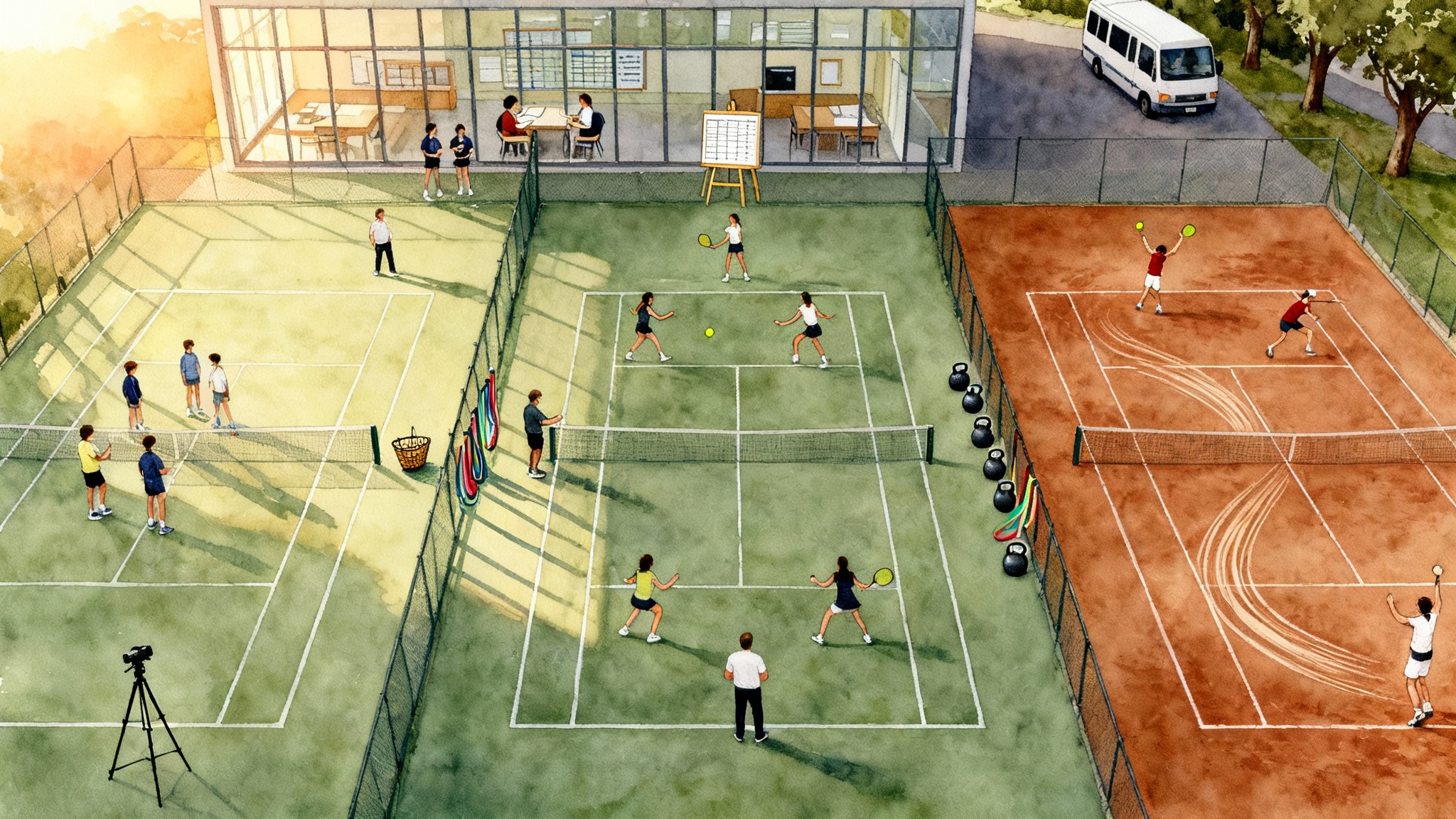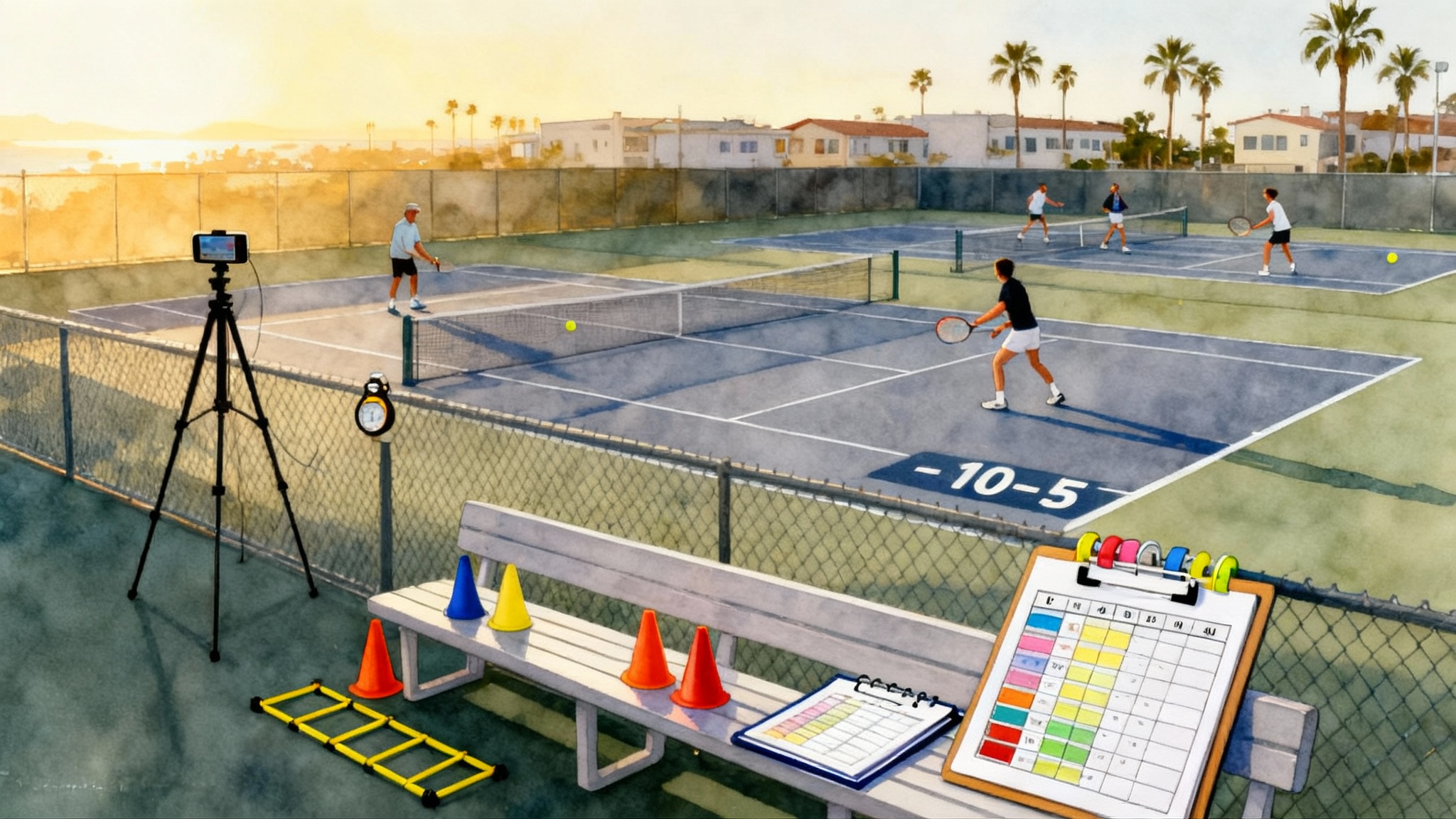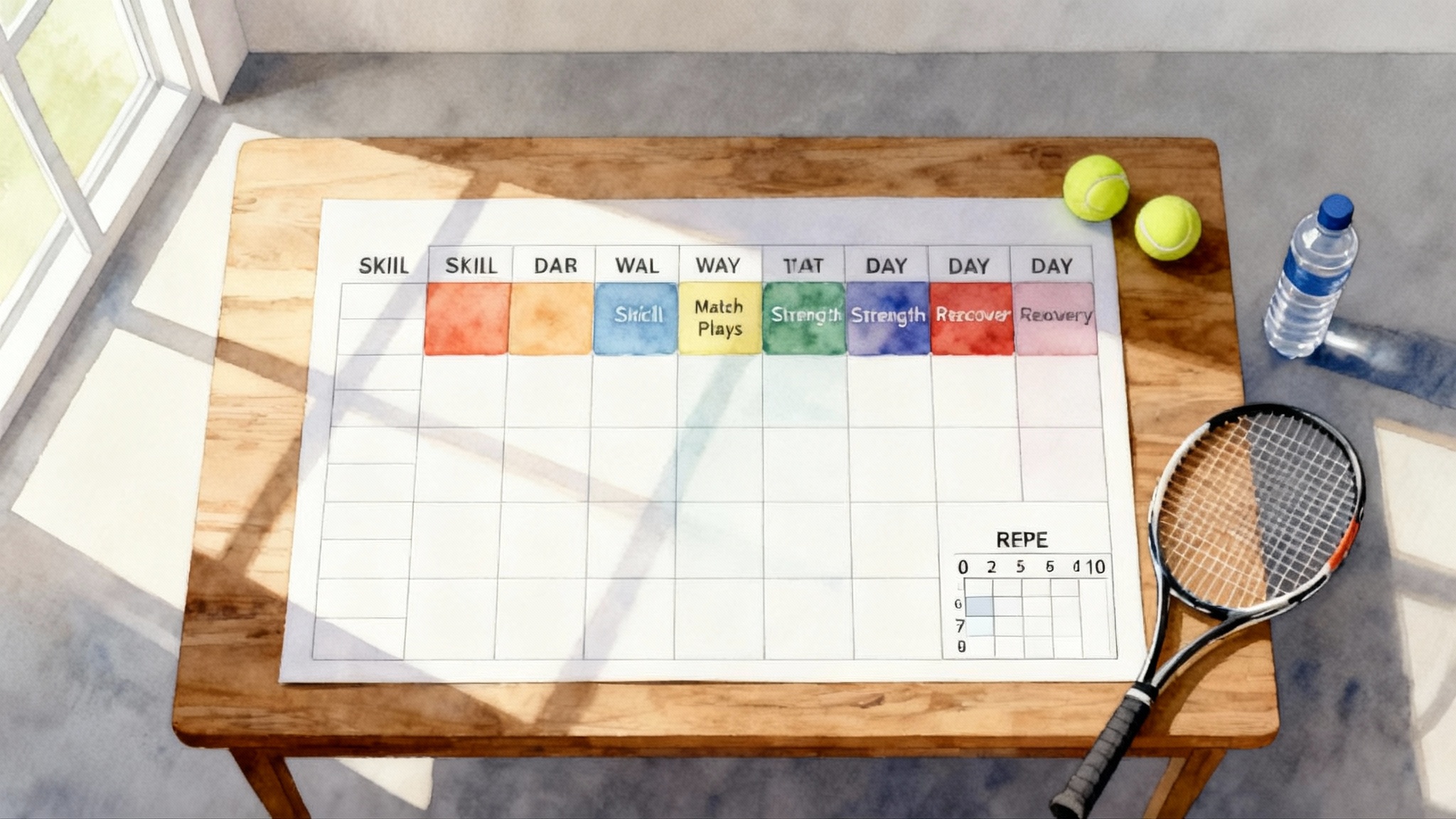Strings and Tension 2025: Age-Smart Racquet Setups
A practical, injury-aware guide to choose the right string type, gauge, and tension by age, level, and arm history. Learn climate and altitude tweaks, restring timing, A/B court tests, and seasonal checklists you can use today.

Why strings and tension matter in 2025
Frames get the spotlight, but the string bed is the engine that drives the ball. The same racquet can feel plush or boardy, launch moonballs or skid lasers, and either protect your arm or irritate it, depending on the string, gauge, and tension you choose. That is why a junior who is still growing, a college player grinding through six-day practice weeks, and an adult leaguer with a desk job should not use the exact same setup.
This guide turns today’s string landscape into clear choices you can apply right away. You will learn which families of string fit your age and level, how to set gauge and tension, what to change for heat, cold, or altitude, and how to test two options on court in twenty minutes. We finish with a seasonal checklist and a direct path to a personalized playtest at the Santa Cruz High-Performance Tennis Academy.
Start with the player: age, level, and arm history
Before picking a string, classify the player. Use these three lenses together.
-
Age
- 8 to 10: developing swing speed, growing bones, small hands. Protect comfort and build sound mechanics.
- 11 to 13: faster swings appear, but technique is still forming. Control helps, comfort stays mandatory. See how to prevent overuse injuries ages 11 to 15.
- 14 to 18: more racquet head speed and matches that run long. Durability and predictable launch matter.
-
Level
- Emerging competitor: relies on depth and height over the net more than on spin shape.
- Advanced junior or college: heavy spin, high contact speeds, smaller margins.
- Adult leaguer: wide range of speeds, often balancing weekday work with evening matches.
-
Arm history
- Healthy: no recurring pain after sessions.
- Sensitive: soreness after hard serves or mishits.
- In recovery: diagnosed tennis elbow or shoulder issues, returning with medical guidance.
Combine the three to steer choices. A 12-year-old with a sensitive elbow is not the same as a 16-year-old with a healthy arm, even if both play tournaments.
String types in plain language
-
Polyester (co-poly): firm and spin-friendly. Great for controlling big swings and creating a lower, more predictable launch angle. It loses tension faster and is the stiffest family, which can stress elbows and shoulders if tension is too high or if the player lacks racquet head speed. Available in shaped profiles that grip the ball and round profiles that snap back easily.
-
Multifilament: hundreds or thousands of microfibers woven and bonded. Feels plush and lively, excellent for comfort and power with good pocketing. Not as durable for string breakers and does not offer the same spin potential as modern polyester when swung at very high speeds.
-
Natural gut: made from cow serosa, the gold standard for comfort, power, and tension maintenance. Extremely arm-friendly and powerful. Expensive and sensitive to moisture. In hybrids it can add long-lasting playability.
-
Synthetic gut (nylon monofilament): simple, affordable, and balanced. More comfortable than polyester, less plush than premium multifilament or natural gut. A strong choice for developing players and adult leaguers who want value and a clean feel.
-
Hybrids: mix two types to blend benefits. Commonly, gut or multifilament in the mains for power and comfort, polyester in the crosses for spin and control. Reverse hybrids place polyester in the mains for extra spin feedback while keeping a softer cross to tame harshness.
Gauge and tension explained
Gauge is thickness. In tennis stringing, smaller numbers can be thicker, which is confusing. Here is the simple map.
- 15, 15L: very thick, about 1.35 millimeters or more
- 16: medium thick, about 1.30 millimeters
- 16L or 17: medium, about 1.25 to 1.27 millimeters
- 17L or 18: thin, about 1.15 to 1.23 millimeters
Thinner strings tend to offer more spin and pocketing but can break faster. Thicker strings last longer and may feel firmer.
Tension is the pull weight during stringing. Lower tension usually gives more power and comfort with a higher launch, higher tension gives more control and a firmer feel with a lower launch. Practical starting points:
- Full polyester: 42 to 52 pounds, 19 to 24 kilograms
- Hybrid with polyester: 45 to 55 pounds, 20 to 25 kilograms
- Multifilament or synthetic gut: 50 to 58 pounds, 23 to 26 kilograms
- Natural gut full bed: 50 to 58 pounds, 23 to 26 kilograms
If your arm is sensitive or you are under 14, stay toward the lower half of those windows.
Age-smart setups: specific builds that work
Below are sample builds. Brands are examples, not mandates, and many equivalents exist. Gauges and tensions are ranges so you can fine tune after your first session.
Juniors 8 to 10
Goal: comfort, learning topspin without forcing the wrist.
- Build 1, comfort and power: full multifilament 17 gauge at 50 to 52 pounds, 23 to 24 kilograms. Examples: a soft multifilament like Wilson NXT, Babolat Xcel, or Tecnifibre X-One Biphase.
- Build 2, value and feel: full synthetic gut 16 gauge at 50 to 54 pounds, 23 to 24.5 kilograms. Example: Prince Synthetic Gut with Duraflex or similar.
Avoid full polyester at this age. Use red or black grips if color helps the player love the racquet more, motivation matters.
Juniors 11 to 13
Goal: add control without sacrificing arm health.
- Build 1, comfort-first hybrid: multifilament mains 16L gauge with a soft polyester cross 17 gauge at 48 to 52 pounds, 22 to 24 kilograms. Example pairs: Wilson NXT mains with Yonex Poly Tour Pro crosses.
- Build 2, balanced value: full synthetic gut 16 gauge at 52 to 54 pounds, 23.5 to 24.5 kilograms. If breakage is frequent, step to 16 gauge multifilament or a hybrid.
Limit full polyester to short trials only if a coach confirms swing speed is mature and arm health is perfect. If used at all, keep tension low, 44 to 48 pounds, 20 to 22 kilograms, and monitor the arm after each hit.
Juniors 14 to 18
Goal: predictable launch for match play, durable enough for heavy spin.
- Build 1, safe spin hybrid: natural gut or multifilament mains 16L, soft polyester crosses 17 at 48 to 52 pounds, 22 to 24 kilograms. This is the most arm-friendly way to get real spin control.
- Build 2, control on a budget: full polyester 17 gauge at 44 to 50 pounds, 20 to 23 kilograms. Examples: Solinco Hyper-G, Babolat RPM Blast, Luxilon ALU Power, Yonex Poly Tour Pro. If the arm is sore, drop tension a couple of pounds or change to a hybrid.
College players
Goal: survive volume and hold performance through long practice blocks.
- Build 1, pro-style hybrid: natural gut mains 16 gauge at 50 to 54 pounds, 23 to 24.5 kilograms, polyester crosses 17 gauge at the same or 1 to 2 pounds lower. This holds playability for many sessions and keeps the arm fresh.
- Build 2, durable poly with feel: round polyester 16L or 17 at 46 to 50 pounds, 21 to 23 kilograms. Choose a round poly for less friction burn and pair with a slightly thicker gauge if you are a frequent string breaker.
Adult leaguers, National Tennis Rating Program 2.5 to 3.0
Goal: easy depth, comfort, and confidence on serve.
- Build 1, comfort and lift: full multifilament 16L at 50 to 54 pounds, 23 to 24.5 kilograms. If the ball sails, raise one pound at a time.
- Build 2, value hybrid: synthetic gut mains 16 with soft polyester crosses 17 at 50 to 52 pounds, 23 to 24 kilograms. This adds a touch of spin without harshness.
Adult leaguers, National Tennis Rating Program 3.5 to 4.0
Goal: blend of spin, directional control, and feel around the net.
- Build 1, comfort-biased hybrid: multifilament mains 16L with shaped polyester crosses 17 at 48 to 52 pounds, 22 to 24 kilograms.
- Build 2, friendly full poly: soft polyester 17 at 44 to 48 pounds, 20 to 22 kilograms. If volleys feel too springy, add two pounds.
Adult leaguers, National Tennis Rating Program 4.5 and up
Goal: high speed contact and tight margins, string bed must stay predictable.
- Build 1, tour hybrid: natural gut mains 16 at 50 to 54 pounds, 23 to 24.5 kilograms, polyester crosses 17 at equal or minus two pounds. This gives you a long lasting sweet window.
- Build 2, control poly: shaped polyester 17 at 46 to 50 pounds, 21 to 23 kilograms. If the ball floats in summer heat, move toward the top of the range or increase gauge thickness.
Climate, temperature, and altitude adjustments
Strings do not live in a vacuum. Heat, cold, humidity, and altitude all shift the way the ball launches off your string bed. For broader preparation on hot days, see our 2025 hydration and heat guide.
-
Heat, above 85 degrees Fahrenheit, 29 degrees Celsius: balls get lively and the court plays fast. Raise tension by 2 to 3 pounds, 1 to 1.5 kilograms, or move one gauge thicker if you are sailing long.
-
Cold, below 60 degrees Fahrenheit, 16 degrees Celsius: balls feel heavier and do not fly. Drop tension by 2 to 3 pounds, 1 to 1.5 kilograms, or move one gauge thinner for easier depth.
-
Humidity and rain risk: multifilaments and synthetic gut handle moisture better than natural gut. If you use natural gut, keep a backup racquet with a moisture-friendly setup for wet days.
-
Altitude, about 4,000 feet or higher: the ball carries and jumps. Add 2 to 4 pounds, 1 to 2 kilograms, and consider a slightly thicker gauge. If you live at altitude full time, learn your tension ladder by testing in one pound steps.
When you travel for tournaments, pack two tensions. If you string at 48 pounds at sea level, bring a 50 or 51 pounds spare for hot or high venues.
Restring frequency you can actually follow
There is an easy rule. Restring as many times per year as you play per week. If you play three times a week, plan at least three restrings per year for non-poly strings. If you use polyester, shorten the cycle because it loses tension and snapback sooner.
- Juniors with multifilament or synthetic gut: every 8 to 12 weeks, sooner if fraying or notching is visible.
- Juniors or adults with polyester or hybrid: every 4 to 8 weeks, or sooner if launch angle changes or balls start flying.
- College players: every 1 to 3 weeks depending on volume. Many string weekly during the season.
Clear signs you need a fresh job: the racquet sounds dull, balls land a foot long on standard swings, you must grip harder to keep control, or the sweet spot feels shrunken. If you ever feel new arm pain, cut the strings and reset. Strings are cheaper than rehab.
On-court A/B tests you can run in twenty minutes
You will learn more in one short A versus B session than in a week of guessing. Use two identical racquets or the same model with two fresh string jobs that differ in only one variable.
-
Test setup
- Racquet A: your current baseline setup.
- Racquet B: change one thing. Example, same string and gauge, plus two pounds. Or switch only the crosses to polyester in the same gauge.
-
Warm up ten minutes, split evenly between racquets. Then rotate every two minutes through three drills.
- Crosscourt forehands from the baseline. Count balls that land deep past the service line with margin over the net.
- Second serve targets to the backhand corner. Track in, long, and net.
- Approach and first volley. Aim at a halfway cone. Note if the volley floats.
-
Scoring sheet
- Depth consistency: percentage of deep balls out of twenty.
- Miss pattern: long, wide, or into the net.
- Arm feel: rate 1 to 5 after each two minute block, where 1 is very harsh and 5 is very plush.
Pick the setup that gives the best combination of depth consistency and arm feel. If both are similar, choose the one that encourages your intended miss. For example, if you attack big, a slightly long miss can be better than a net miss.
Seasonal switch checklist
Keep your string plan on a calendar. Use this checklist at the start of each new season and any time you travel to a very different climate.
-
Preseason
- Confirm grip size and overgrip thickness. Changing grip can alter perceived stiffness.
- Refresh grommets if cracked. Sharp edges cut strings.
- Choose a baseline tension, then string a second racquet at plus two pounds if you expect summer heat or altitude.
-
Midseason
- Track bounce height off a baseline rally. If the same swing now lands a foot longer than in week one, your strings have crept loose. Restring or move up one pound.
- Check for notching and fraying. Replace if the mains are half cut in.
-
Tournament week
- String two days before the first match so tension stabilizes.
- Pack a moisture-friendly backup if rain threatens.
- If balls are high altitude or extra duty, add one pound.
-
Postseason
- Cut out old polyester, even if it did not break. Dead poly is harsh on the arm.
- Log which tensions performed best and why.
Common pitfalls to avoid
- High tension full polyester in young or sensitive arms. If you want spin, take a hybrid path with soft mains and poly crosses.
- Changing more than one variable at once. You will not know what caused the improvement or the problem.
- Ignoring crosses. The cross string can soften the bed and stabilize tension. A soft cross with a firm main is a powerful recipe.
- Staying with a setup that causes pain. Cut it out and reset. Do not wait a month to see if it improves.
- Forgetting the ball. A switch from regular duty to extra duty changes feel. Adjust tension one pound when your league changes balls.
Sample builds by outcome
When you want a specific outcome, work backward.
-
Spin and shape first
- Shaped polyester 17 at 46 to 50 pounds, 21 to 23 kilograms, in a 98 to 100 square inch frame. If you want more comfort, keep shaped polyester in the crosses at 46 to 48 pounds with a multifilament main at 50 to 52 pounds.
-
Control under pressure
- Round polyester 16L or 17 at 48 to 50 pounds, 22 to 23 kilograms. Round profiles tend to deliver a crisp, predictable launch for flatter drives and slice defense.
-
Power and comfort
- Full multifilament 16L at 50 to 54 pounds, 23 to 24.5 kilograms. If you need more stability on big swings, move to a hybrid with multifilament mains and round polyester crosses at 48 pounds, 22 kilograms.
-
Longevity with feel
- Natural gut mains 16 at 52 pounds, 23.5 kilograms, with polyester crosses 17 at 50 pounds, 22.5 kilograms. You get long lasting comfort and a controlled response in a wide temperature range.
Who should consider natural gut in 2025
Players who value arm health or low fatigue, players returning from injury, and singles specialists who need early ball speed without overswinging often benefit from natural gut in the mains. If cost is a barrier, reserve gut for your match frames and use a multifilament for practice.
How to tune after the first hit
Use a small ladder of changes, never giant leaps.
- If balls sail long on full swings, add one to two pounds, or switch one gauge thicker.
- If your arm is sore or balls die short, drop one to two pounds, or switch one gauge thinner.
- If the sweet spot feels tiny, try a softer cross string or a lower cross tension by two pounds.
- If you shank often in wind, a thicker gauge can calm deflection at the edges of the string bed.
Log your choices, match outcomes, and how the string felt on serves, returns, and the last thirty minutes of the session when fatigue sets in. The right setup should support your game when tired, not only in warm up.
Book a personal string consult and playtest
A great setup is personal, and it changes with your season and your body. If you are near the Monterey Bay area, book a hands-on session at the Santa Cruz High-Performance Tennis Academy. We will measure your swing speeds, review your match patterns, and install two test builds to compare side by side on court. Not local. Schedule a virtual string consult with our team or contact a trusted local partner to follow the same testing protocol.
The string bed is the engine of your racquet. When you match string type, gauge, and tension to your age, level, and arm history, your swing becomes simpler and your margin grows. Build your plan, test it with purpose, and refresh it on a schedule. Your game, and your elbow, will thank you.






